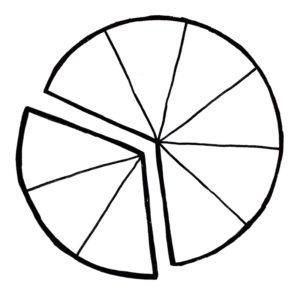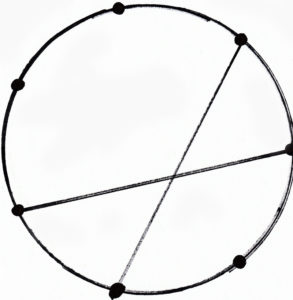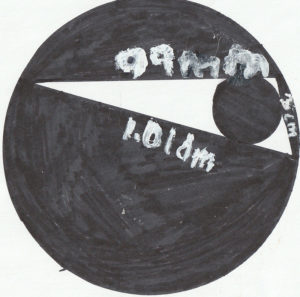We wanted to find the weight per cm3. In systems of equations with many variables and equations, we should start with a matrix. In the matrix below we have rows by A, B, C (%), W (g/cm3).We can reach the identity matrix with 3 row operations. First, R1 : (-43/584)R1 + (275/1168)R2 – (35/584)R3. Second, we do R2 : (7/43)R1 + (1/430)R2 – (3/215)R3. And R3 : -4R1 – 15R2 + (1/6)R3 finishes it off. Then, we can find that the mixture has 40 g/cm3. Finally, finding the 1:2:3 ratio is easy because in both powder 1 and the mystery mixture, A=B. Powder 2 : powder 3 must equal 11:3, making the ratio of A:B:C is 67:67:36. To get A:B:C to equivalent 2:2:3, we must add 129 1’s to the 1:2:3 ratio to get 129:11:3, we have A:B:C equals 196:196:294, or 2:2:3. Our answers are 129:11:3 and 35.86 g/cm3.
\left(\begin{matrix}
25 & 25 & 50 & 35 \\
50 & 20 & 30 & 44 \\
20 & 75 & 05 & 43
\end{matrix}\right)
\overrightarrow{_{-\frac{43}{584}R_1+\frac{275}{1168}R_2-\frac{35}{584}R_3\rightarrow R_1}}
\left(\begin{matrix}
1 & 0 & 0 & 0.6 \\
50 & 20 & 20 & 44 \\
20 & 75 & 05 & 43
\end{matrix}\right)
\\[16pt]
\left(\begin{matrix}
1 & 0 & 0 & 0.6 \\
50 & 20 & 20 & 44 \\
20 & 75 & 05 & 43
\end{matrix}\right)
\overrightarrow{_{\frac{7}{43}R_1+\frac{1}{430}R_2-\frac{3}{215}R_3\rightarrow R_2}}
\left(\begin{matrix}
1 & 0 & 0 & 0.6 \\
0 & 1 & 0 & 0.4 \\
20 & 75 & 05 & 43
\end{matrix}\right)
\\[16pt]
\left(\begin{matrix}
1 & 0 & 0 & 0.6 \\
0 & 1 & 0 & 0.4 \\
20 & 75 & 05 & 43
\end{matrix}\right)
\overrightarrow{_{-4R_1-15R_2+\frac{1}{6}R_3\rightarrow R_3}}
\left(\begin{matrix}
1 & 0 & 0 & 0.6 \\
0 & 1 & 0 & 0.4 \\
0 & 0 & 1 & 0.2
\end{matrix}\right)



